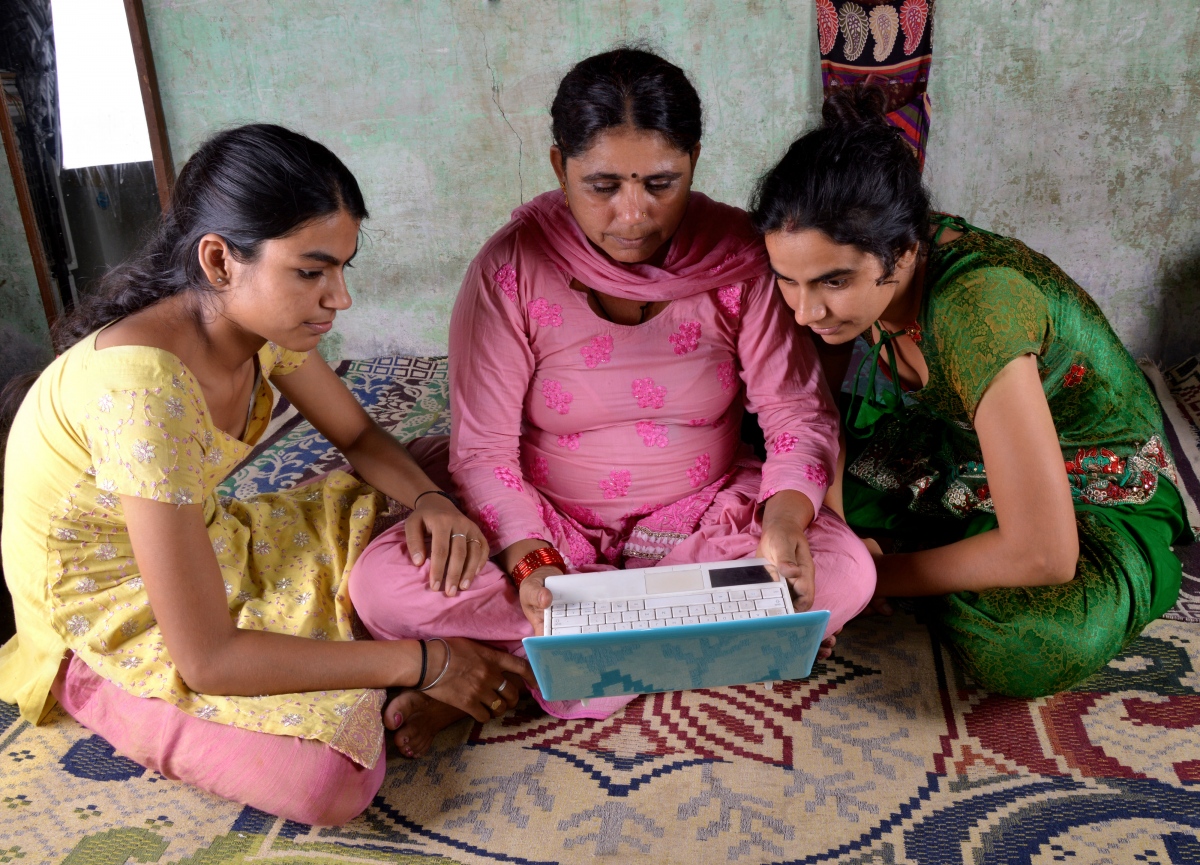This blog first appeared on NextBillion April 18
 There’s a saying in technology circles: “If you’re not paying, then you’re the product.” Nothing could be more axiomatic in the current zeitgeist, as shown by Mark Zuckerberg’s recent testimony in front of Congress to explain the ongoing furore about the sale of Facebook users’ personal data to nefarious entities. Facebook, of course, is free to use. Its users – and the data we produce – are the product. The advertisers and other beneficiaries of that data are its customers.
There’s a saying in technology circles: “If you’re not paying, then you’re the product.” Nothing could be more axiomatic in the current zeitgeist, as shown by Mark Zuckerberg’s recent testimony in front of Congress to explain the ongoing furore about the sale of Facebook users’ personal data to nefarious entities. Facebook, of course, is free to use. Its users – and the data we produce – are the product. The advertisers and other beneficiaries of that data are its customers.
Technology’s double-edged sword
Surprisingly, this little axiom long pre-dates social media. In fact, it goes back at least as far as 1973, when artists Richard Serra and Carlota Fay Schoolman broadcast a short video entitled “Television Delivers People.” But whatever people have until now understood of their relationship with technology platforms such as Facebook and Google, there can be no doubt that the mood has turned. For all the Pollyanna-ish talk of liberation, efficiency and modernization, technology is increasingly seen as the proverbial double-edged sword – something not just from which to benefit, but also, as CFI’s Elisabeth Rhyne has argued just this week, from which to be protected.
The protection of clients is central to financial inclusion (or, at least, it is when done well). Technology, too, becomes more and more embedded in how financial services can be offered to low-income and excluded client segments. Coming with it are the well-known opportunities to reduce costs, increase outreach, drive financial education and in particular help remote populations access information and tools to increase their income and protect themselves from shocks.
The recent development of Social Performance Management frameworks in financial inclusion reflects that these vulnerable target populations, the same ones on the cusp of benefiting from the proliferation of financial technology solutions, need special protection. Cambridge Analytica, with its cynical exploitation of users’ data, may appear like some cartoon villain, but it is merely responding with a supply to meet a demand in a rapidly emerging market. For the user, protection from this, in one form or another, is necessary – and inevitable. And in the financial inclusion sector, ‘client protection’ must stand alongside ‘opportunity’ as we evaluate how financial service providers (FSPs) offer cutting-edge, technology-enabled services and solutions to their clients.
This focus on opportunity and protection is the double-pronged theme that underpins the European Microfinance Award 2018 – on Financial Inclusion through Technology – that launched its call for applications on April 17.
Technology as liberator
The rationale for focusing on technology in this year’s award is clear. Everywhere you look in the financial inclusion sector, technology is at the forefront. Traditional microfinance is costly and human-intensive. The human touch can be important, especially for remote, vulnerable populations, but this translates into the high cost to the provider of delivering services, and, inevitably, a high cost to the client. Reducing costs while still providing the valuable products and services that clients actually need opens the door to an increasing range of technology-enabled solutions that are transforming financial inclusion.
Within the sector, technology is a driver for facilitating communication, expanding enormously the access and exchange of information, and instantly interconnecting people and services beyond geographic, cultural and language boundaries. Relatively cheap, transformational technology solutions have been made available for a growing number of users worldwide, including the key segments of women, rural communities and the very poor. Mobile money is a growing alternative to cash. The reduced costs and increased access to the Internet, especially through smartphones, enables new ways for clients to borrow, save, insure themselves and their livelihoods, and send money. But reducing the human element of the microfinance model may threaten some of the safeguards that protect clients, while moving some of the client’s interaction with the institution into the digital realm may risk increased over-indebtedness, fraud, or misuse of data.
The risks and opportunities alike will depend to some degree on the service provider, and the landscape of digital and technology-enabled financial service providers is extremely wide. Traditional NGOs, MFIs, cooperatives, commercial banks, local development banks, insurance companies, Mobile Network Operators (MNOs) and Money Transfer Organizations (MTOs) are just some of those implementing technology solutions in different ways and levels of sophistication.
The European Microfinance Award 2018
Each year, we at the European Microfinance Platform (e-MFP) launch the European Microfinance Award, in conjunction with the Luxembourg Ministry of Foreign and European Affairs and the Inclusive Finance Network Luxembourg (InFiNe.lu). Besides the cash prizes of €100,000 for the winner and €10,000 for each other finalist, the press exposure and investment opportunities that come from being a semi-finalist, finalist or winner of the Award can be enormous.
Now that the call for applications is open, all the details of eligibility and more about the scope, deadlines and timeline of the award can be found in the explanatory note on the Award website.
To profile and catalyze replication of the most promising of the technology-enabled solutions, we invite application from FSPs that use technology innovations to expand outreach, broaden product offerings, improve the client experience and increase operating efficiency, all guided by an unwavering focus on socially responsible finance.
We anticipate receiving applications profiling a fascinating array of solutions, from technology-enabled credit, savings or insurance products, delivered to clients via mobile operator network, USSD, e-wallet, internet, applications, credit/debit card, ATM or other digital channels or process, to domestic or international payment and transfer facilities, or delivery-side technology solutions that increase outreach and efficiency of the delivery of financial services. We hope to see examples of technology enabling non-financial services as well, such as financial education for clients.
In previous years, the award has covered themes as diverse as access to education, housing microfinance and microfinance in post-crisis contexts. In many ways, each of these focus a great deal on the opportunities – how to best increase access to quality education; how to sustainably provide support to clients who want to build or improve a home. This time, we have sought to be mindful not just of the opportunity, but the risks of technology. For this reason, while the pace of innovation is breakneck and the opportunities virtually limitless, we hope to see applications from providers who not only focus on the benefits of technology-enabled financial solutions, but also place the protection of the client, especially the most vulnerable among them, at the core of their programs.
Eligibility for the Award
Eligible applicants are organisations active in the financial inclusion sector who use technology-enabled solutions to increase outreach of quality financial services to financially excluded segments. The technology must focus on socially responsible finance for low income, vulnerable and excluded groups. At least one of the technology-enabled solutions the applicant has introduced must have been fully operational for a minimum of two years.
Eligible institutions also have to be based and operate in a Least Developed Country, Low Income Country, Lower Middle Income Country or an Upper Middle Income Country as defined by the Development Assistance Committee (DAC) for ODA Recipients. Various types of organisations are eligible including MFIs (all legal forms), NGOs, cooperatives, commercial banks, local development banks, leasing firms, insurance companies, Fintech companies, mobile money providers, mobile network operators and mobile transfer organizations that provide financial services to retail clients.


Leave a comment